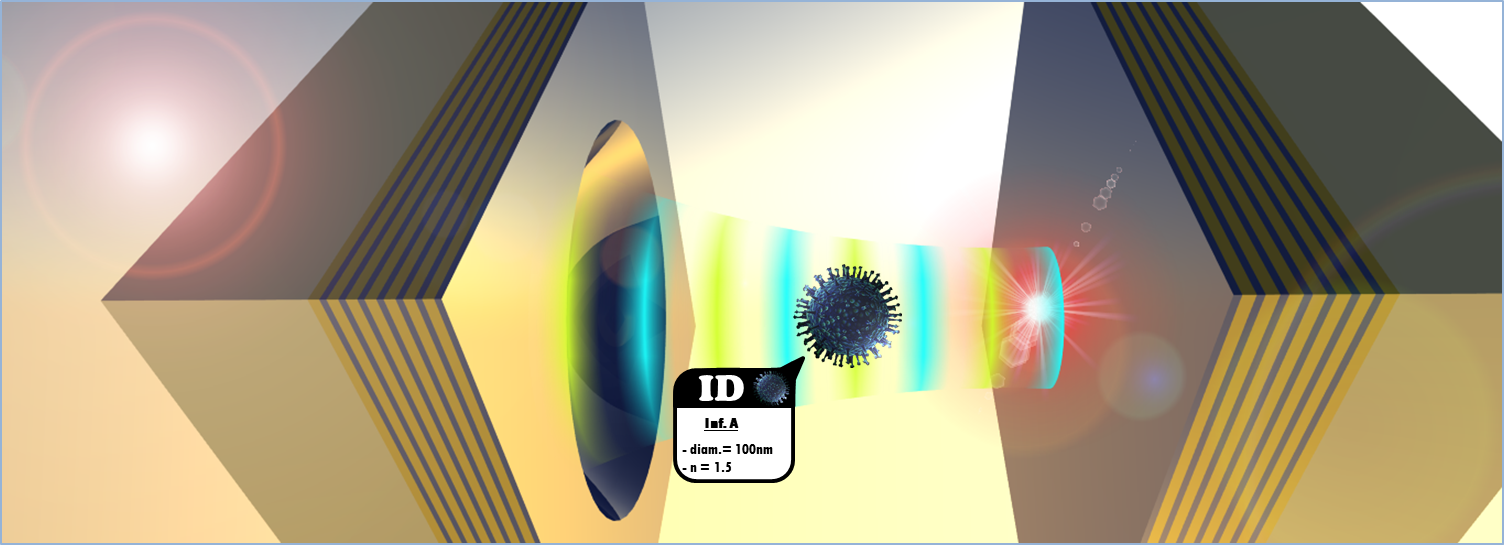Optical Microcavities for Sensing Nanoparticles
In NQIT we work a lot on building components that provide the precise control over light and matter needed for quantum computers. In particular, as part of our work on solid-state qubits, we have been developing "optical microcavities" - tiny light-confining devices on a micrometer scale - to improve the efficiency of coupling quantum nodes to a network.
These "optical microcavities", made up of mirrors just a few micrometres apart, force photons to bounce back and forth thousands of times interacting strongly with any material present. For quantum computing this means that a solid state qubit, such as a single colour centre in diamond, placed in the cavity, can convey quantum information more efficiently to a larger quantum network.
Application as a Sensor
Using this enhanced interaction, we are exploring other applications of these "optical microcavities" outside quantum computing.
In a new paper in Nano Letters we show how they can also be used as miniature 'optical tweezers' and sensors for nanoparticles - particles such as viruses whose size is around 100 nm - trapping individual nanoparticles suspended in a fluid and measuring their size and composition.
This system acts as a nanosized laboratory where you can follow the properties of a single nanoparticle interacting with its environment: literally a "lab-on-a-chip".
Potential Applications in Nano-Medicine
An exciting potential application of these sensors is to detect and characterise individual virus particles, which opens up the possibility of portable and highly sensitive devices for medical diagnostics and environmental monitoring.
An optical microcavity sensor catalogues viruses to provide instant diagnosis to a patient
"Optical microcavity" sensors could also provide a powerful new tool for use in a range of research fields such as nano-chemistry and nano-medicine, allowing the study of how nanoparticles respond to changes in their fluid surroundings.
Nanoparticle Trapping and Characterization Using Open Microcavities
A. A. P. Trichet et al
http://pubs.acs.org/doi/abs/10.1021/acs.nanolett.6b02433
Abstract
Characterization and trapping of nanoparticles in solution is of great importance for lab-on-a-chip applications in biomedical, environmental, and materials sciences. Devices are now starting to emerge allowing such manipulations and investigations in real-time. Better insights into the interaction between the nanoparticle and the optical trap is therefore necessary in order to move forward in this field. In this work, we present a new kind of nanotweezers based on open microcavities. We show that by monitoring the cavity mode wavelength shift as the particle diffuses through the cavity, it is possible to establish both the nanoparticle polarizability and its coefficient of friction. Additionally, our experiment provides a deep insight in the interaction between the nanoparticle and the cavity mode. The technique has built-in calibration of the trap strength and spring constant, making it attractive for practical applications. This work illustrates the potential of such optical microcavities for future developments in nanoparticle sensors and lab-on-a-chip devices.
